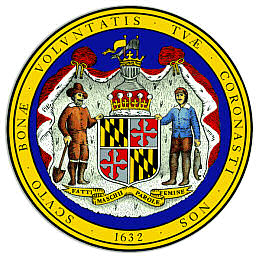Climate Change Adaptation - Maryland

Climate Change History
In 2007, Maryland commissioned a Climate Plan which was completed in 2008 and updated in late 2009. This effort has spawned several related documents such as the Maryland Energy Efficiency Act and a green building standard. In part due to the national prominence of the Chesapeake Bay, Maryland’s climate plans have always made explicit mention of wetlands. Since at least 2004, the state plans highlight a set of wetland functions such as storm surge attenuation and water quality improvement. These plans identify economic and human health values associated with these functions and recommend strategies to conserve and develop resilience for them. Maryland’s wetlands and climate change focus is on the coastal areas which dominate the State’s geography, though there is some interest in additional work relating to vernal pools.
Current & Future Action
Maryland’s current policy focuses on the maintenance and conservation of a “living shoreline.” State resources are employed in educating contractors and builders about the values (defensive and aesthetic) of wetlands as well as techniques to preserve them while developing near them. The state is working to create an expedited review and approval process for projects that use and/or develop living shoreline guidelines.
Additional assessment work is being considered by the Department of Natural Resources to determine adaptation and response strategies of protection, migration, and abandonment, for natural resources and infrastructure, including which estuarine wetlands have the best ability to migrate inland given sea level rise. Agencies will work to develop management approaches to expand forests and wetlands in areas most suited for long-term survival.
Pilot Programs/Current Studies
Maryland’s Living Shorelines program is a grant program managed by the Chesapeake Bay Trust, in partnership with the Maryland Department of the Environment and National Oceanic and Atmospheric Administration, to replace inappropriate ‘shoreline hardening’ structures with constructed wetland buffers to achieve similar effects.
For More Information
Maryland’s Climate Change Plan is available from the MDE website: http://www.mde.maryland.gov/programs/air/climatechange/pages/air/climatechange/legislation/index.aspx
Maryland’s Living Shorelines program website is: http://www.cbtrust.org/site/c.miJPKXPCJnH/b.5457537/k.B2A2/Living_Shorelines.htm
For additional information contact either Denise Clearwater (dclearwater@mde.state.md.us), Brian Hug (bhug@mde.state.md.us), or Zoe Johnson (zjohnson@dnr.state.md.us).
